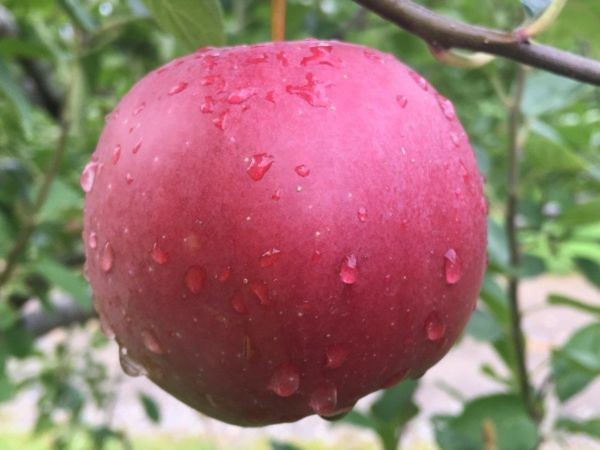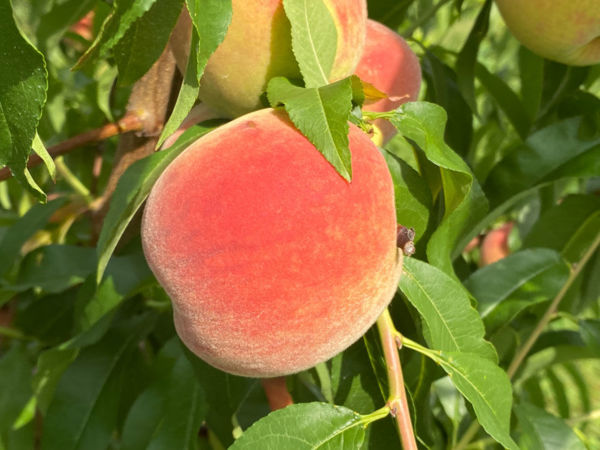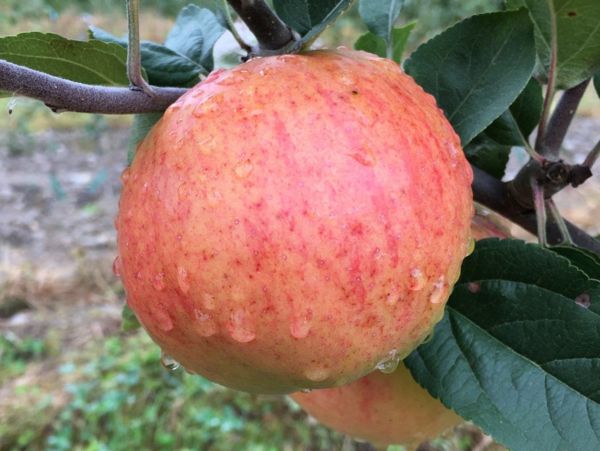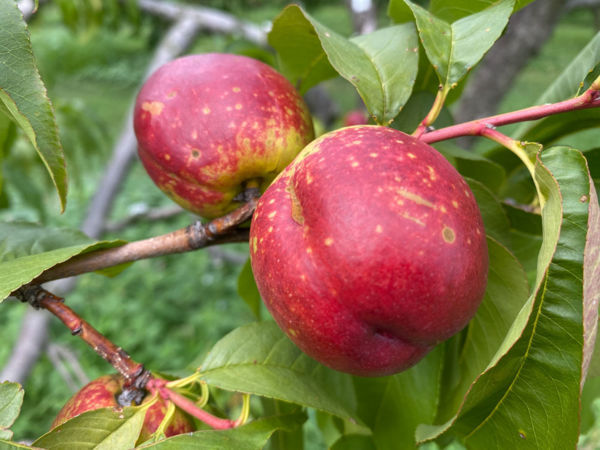An attractive, highly disease-resistant apple, ideal for organic growers.
Bosc Pear on OHxF 97 (Spring 2025)
You are viewing a tree that will ship in Spring 2025. You can also find trees for Spring 2024.
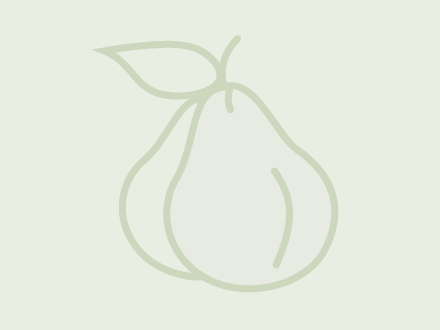
A large russeted winter pear with white flesh and a rich, delicious flavor.. Also known as Kaiser, Buerré Bosc.
Bosc is a slow grower but very productive and reliable once established. It is susceptible to fire blight but hardy and somewhat resistant to pear scab. It is sometimes difficult to train because of its leggy habit. This pear is not compatible with quince rootstock, but it makes a great pollenizer for Bartlett.
In The Pears of New York, U.P. Hedrick describes Bosc as a fruit that merits "unqualified praise." He writes, "They are nearly flawless in every character. The pears at once receive approbation from all who see them by virtue of their uniquely beautiful color and shape, in which characters they are wholly unlike any other pear." He says of their flavor that "Seckel alone surpasses it as a dessert fruit in the estimation of most pear fanciers." We have become, perhaps, somewhat numb to the quality of the Bosc pear since it is now a supermarket staple, but there are good reasons for its popularity! This is a large winter pear that will store well for up to 6 months. Originally called Buerré Bosc, the "buerré" means "butter", referring to the lovely smooth texture. The aromatic flesh is also very firm, making it a favorite for poaching.
Hedrick's account of Bosc's history holds that it was raised from seed in 1807 by Dr. Van Mons, a pomologist from Louvain, Belgium, and that it was first named Calebasse Bosc in honor of M. Bosc, a French naturalist.
The Fruit
Fruit Type
Category: Pear
Subcategory:
European
Fruit Uses & Storage
Uses: fresh eating, baking, storage, sauce
Storage duration: three plus months (approximate, depending on storage conditions)
Fruit Appearance
Skin color: russeted
Flesh color: white
Fruit Origins
Parentage: seedling
Origin: Belgium
Introduced in: 1807
Introduced by: Dr. Van Mons
The Environment
Calendar & Geography
USDA zones: 5 - 9
Chill hours: 800
Ripening date: Sep 17 (approximate, in New York State) + 28 days after Bartlett
Tree Height & Spacing
glossary
Rootstock: OHxF 97 Rootstock
Rootstock size class: Standard (100% Size)
Tree spacing: See details
Good for wildlife planting? N
Diseases & Pests
glossary
Fireblight: Susceptible
Pear Scab: Resistant
Pollination
Pollination Factors
glossary
Bloom group: 3
Is it self-fertile? N
Is it fertile? Y
Ploidy: Diploid
Rootstock size class:
Standard (100% Size)
Pollination Partners
This table shows the first few results from a full search for pollenizers of Bosc Pear on OHxF 97. Please see our Pollenizer Search to run other queries and read how the application uses various factors. Also read more about fruit tree pollination.
See all pollination matches for Bosc Pear on OHxF 97
Featured Products
A few things we're loving right now...
A full-flavored, freestone white peach.
A traditional semisharp cider apple from Spain.
A widely-grown, large, yellow-fleshed nectarine.









